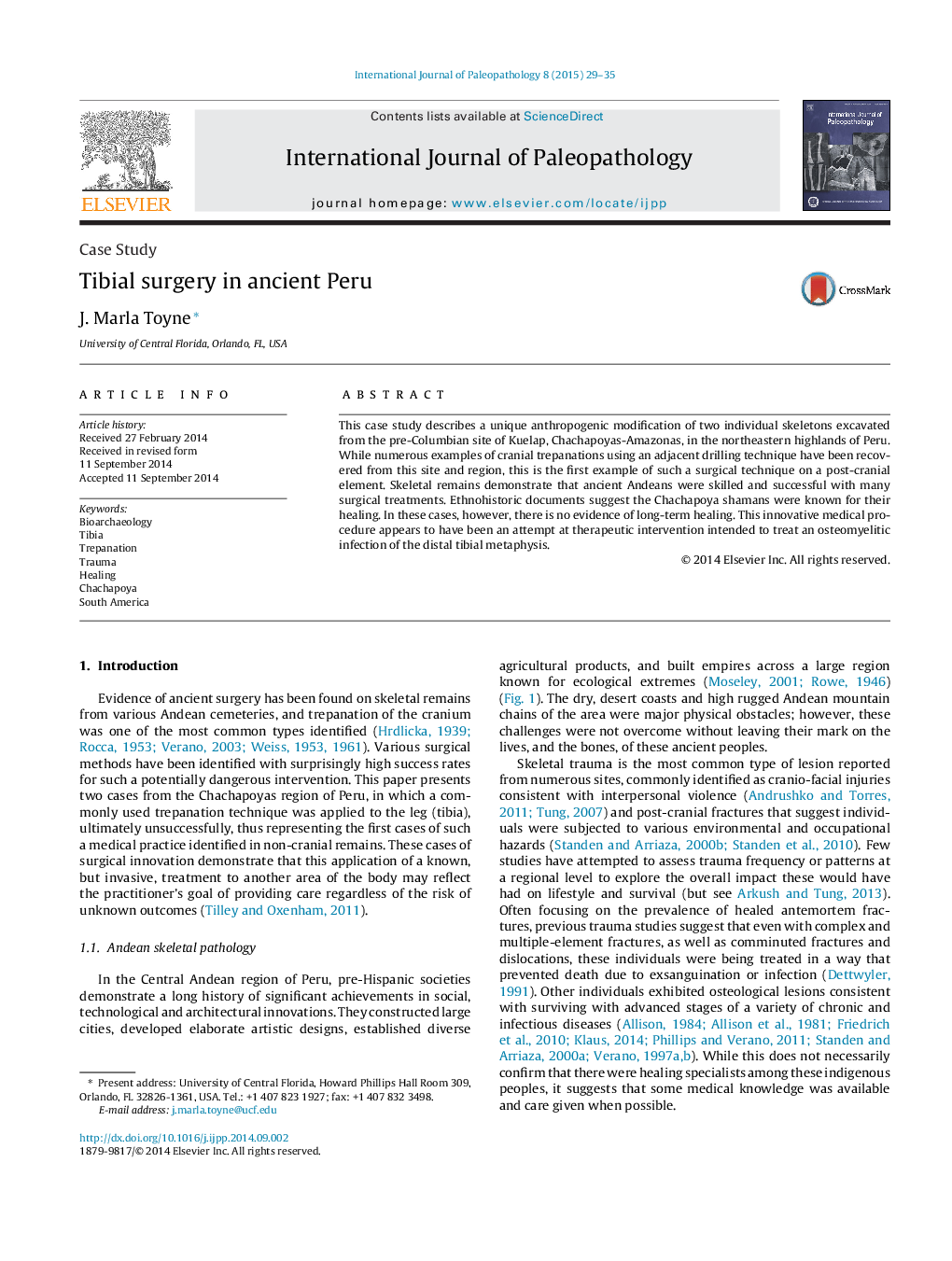| کد مقاله | کد نشریه | سال انتشار | مقاله انگلیسی | نسخه تمام متن |
|---|---|---|---|---|
| 101329 | 1422383 | 2015 | 7 صفحه PDF | دانلود رایگان |
• First evidence of bone drilling technique used to treat possible lower leg infection.
• Innovative application of a known trepanation surgery technique to another area of the body.
• Suggests South American Andean medical knowledge and practice follows a model of innovative care.
This case study describes a unique anthropogenic modification of two individual skeletons excavated from the pre-Columbian site of Kuelap, Chachapoyas-Amazonas, in the northeastern highlands of Peru. While numerous examples of cranial trepanations using an adjacent drilling technique have been recovered from this site and region, this is the first example of such a surgical technique on a post-cranial element. Skeletal remains demonstrate that ancient Andeans were skilled and successful with many surgical treatments. Ethnohistoric documents suggest the Chachapoya shamans were known for their healing. In these cases, however, there is no evidence of long-term healing. This innovative medical procedure appears to have been an attempt at therapeutic intervention intended to treat an osteomyelitic infection of the distal tibial metaphysis.
Journal: International Journal of Paleopathology - Volume 8, March 2015, Pages 29–35
